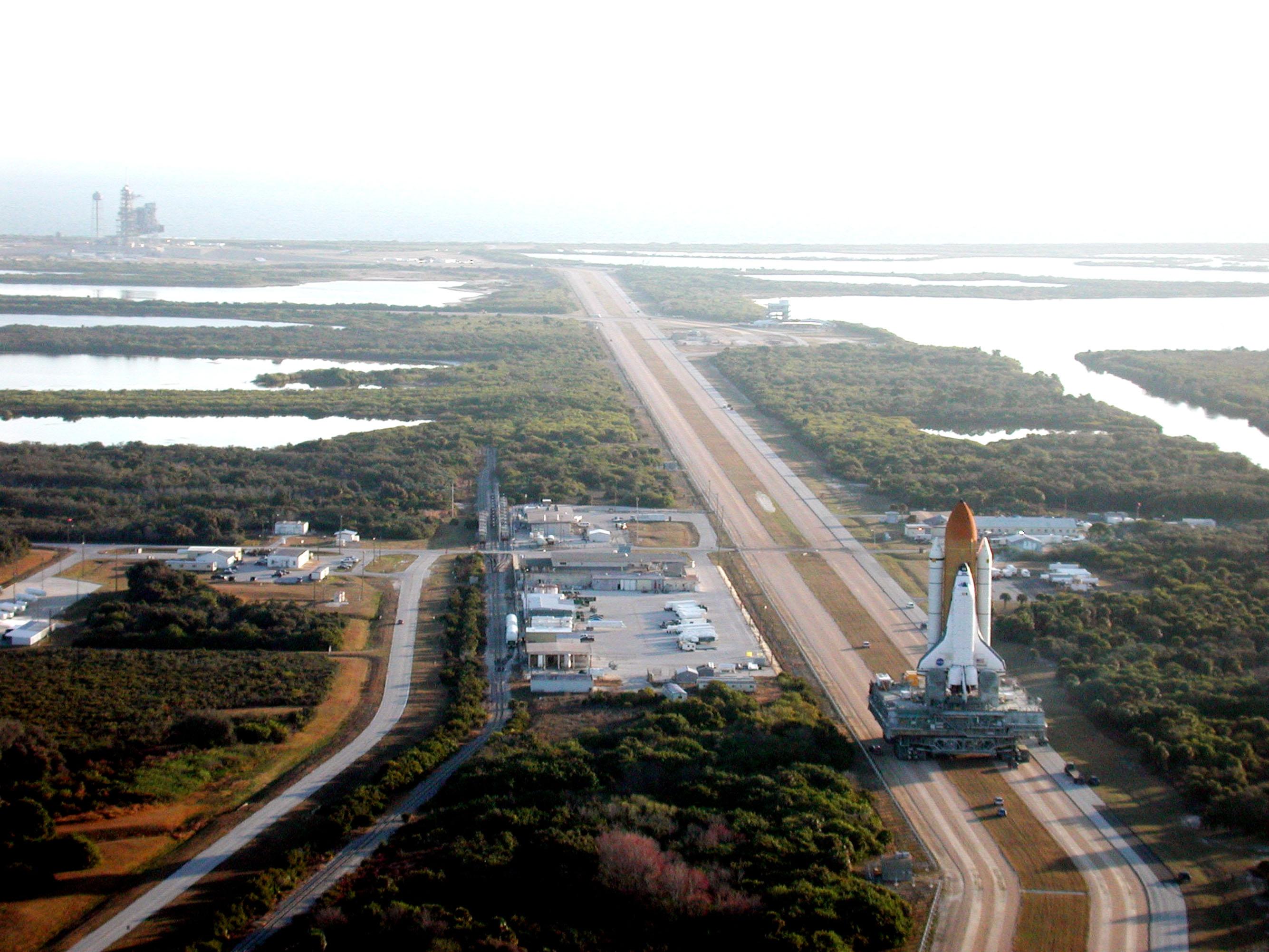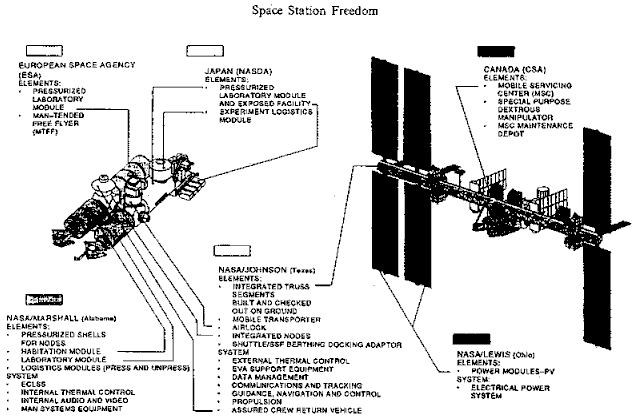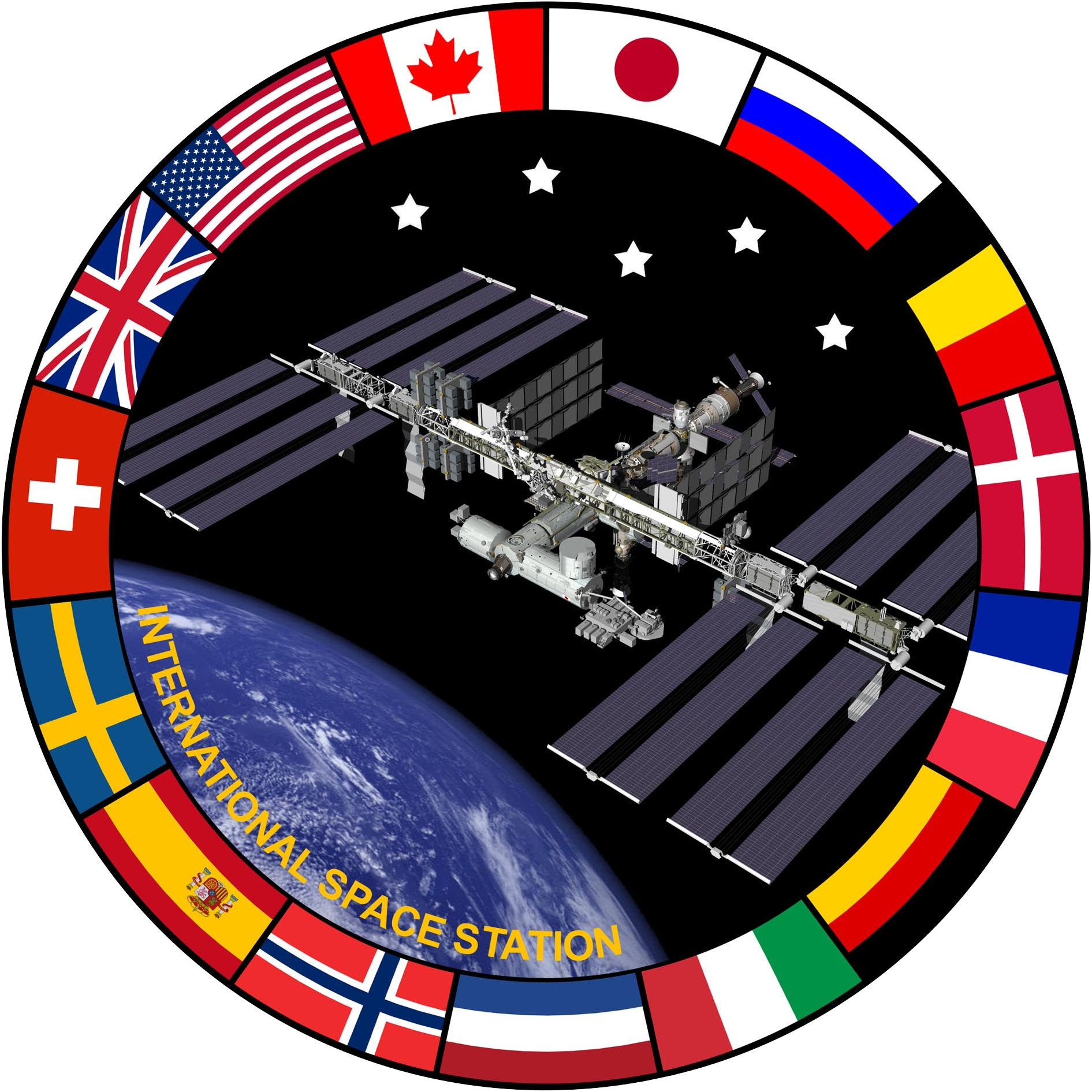|
Integrated Truss Structure
The Integrated Truss Structure (ITS) of the International Space Station (ISS) consists of a linear arranged sequence of connected trusses on which various unpressurized components are mounted such as logistics carriers, radiators, solar arrays, and other equipment. It supplies the ISS with a bus architecture. It is approximately 110 meters long and is made from aluminum and stainless steel. Truss components All truss components were named after their planned end-positions: Z for zenith, S for starboard and P for port, with the number indicating the sequential position. The S0 truss might be considered a misnomer, as it is mounted centrally on the zenith position of ''Destiny'' and is neither starboard nor port side. Manufacturing ISS truss segments were fabricated by Boeing in its facilities at Huntington Beach, California (formerly McDonnell Douglas), Michoud Assembly Facility in New Orleans, Louisiana, Marshall Space Flight Center in Huntsville, Alabama, and in Tulsa, O ... [...More Info...] [...Related Items...] OR: [Wikipedia] [Google] [Baidu] |
ISS Solar Arrays + Truss View
The International Space Station (ISS) is the largest modular space station currently in low Earth orbit. It is a multinational collaborative project involving five participating space agencies: NASA (United States), Roscosmos (Russia), JAXA (Japan), ESA (Europe), and CSA (Canada). The ownership and use of the space station is established by intergovernmental treaties and agreements. The station serves as a microgravity and space environment research laboratory in which scientific research is conducted in astrobiology, astronomy, meteorology, physics, and other fields. The ISS is suited for testing the spacecraft systems and equipment required for possible future long-duration missions to the Moon and Mars. The ISS programme evolved from the Space Station ''Freedom'', a 1984 American proposal to construct a permanently crewed Earth-orbiting station, and the contemporaneous Soviet/Russian '' Mir-2'' proposal from 1976 with similar aims. The ISS is the ninth space station to b ... [...More Info...] [...Related Items...] OR: [Wikipedia] [Google] [Baidu] |
Tulsa, Oklahoma
Tulsa () is the second-largest city in the state of Oklahoma and 47th-most populous city in the United States. The population was 413,066 as of the 2020 census. It is the principal municipality of the Tulsa Metropolitan Area, a region with 1,023,988 residents. The city serves as the county seat of Tulsa County, the most densely populated county in Oklahoma, with urban development extending into Osage, Rogers, and Wagoner counties. Tulsa was settled between 1828 and 1836 by the Lochapoka Band of Creek Native American tribe and most of Tulsa is still part of the territory of the Muscogee (Creek) Nation. Historically, a robust energy sector fueled Tulsa's economy; however, today the city has diversified and leading sectors include finance, aviation, telecommunications and technology. Two institutions of higher education within the city have sports teams at the NCAA Division I level: Oral Roberts University and the University of Tulsa. As well, the University of Oklaho ... [...More Info...] [...Related Items...] OR: [Wikipedia] [Google] [Baidu] |
Ad Astra Rocket Company
The Ad Astra Rocket Company is an American rocket propulsion company dedicated to the development of advanced plasma rocket propulsion technology. Located in Webster, Texas, three miles away from NASA's Johnson Space Center, the company was incorporated on January 14, 2005. The President and CEO of Ad Astra Rocket Company is retired astronaut Franklin Chang Díaz.Ad Astra Rocket Company – About us company website, accessed 2010-03-10 The company has been working on Chang Díaz's concept of the Variable Specific Impulse Magnetoplasma Rocket, known by its acronym VASIMR. The VASIMR is intended to achieve several advantages over current chemical rocket designs, including lunar cargo transport, in-space refueling, and ultr ... [...More Info...] [...Related Items...] OR: [Wikipedia] [Google] [Baidu] |
STS-98
STS-98 was a 2001 Space Shuttle mission to the International Space Station (ISS) flown by Space Shuttle '' Atlantis''. It was the first human spaceflight launch of the 21st century. STS-98 delivered to the station the ''Destiny'' Laboratory Module. All mission objectives were completed and the shuttle reentered and landed safely at Edwards Air Force Base on 20 February 2001, after twelve days in space, six of which were spent docked to the ISS. Crew Crew notes Mark C. Lee was scheduled to fly as Mission Specialist 1 on his fifth trip to space, but due to undisclosed reasons, he was removed from this flight. His replacement was Robert Curbeam. Launch attempts Mission highlights The crew continued the task of building and enhancing the International Space Station by delivering the U.S. ''Destiny'' Laboratory Module. It was the first NASA lab to be permanently used since the days of Skylab nearly three decades earlier. It was manufactured by Boeing at the Michoud Assembl ... [...More Info...] [...Related Items...] OR: [Wikipedia] [Google] [Baidu] |
Pressurized Mating Adapter
The Pressurized Mating Adapter (PMA) is a class of spacecraft adapters that convert the Common Berthing Mechanism (CBM) used on the US Orbital Segment to APAS-95 docking ports. There are three PMAs located on the International Space Station (ISS); the first two were launched with the ''Unity'' connecting module in 1998 aboard STS-88, and the third was launched in 2000 aboard STS-92. All three of the PMAs are now used to permanently connect parts of the ISS, so they are no longer available as docking ports for visiting spacecraft. Design/History Its origins lie in designs for the Pressurized Docking Mast, consisting of an off-axis frustoconical docking tunnel contained within a framework and a retractable coupling mechanism, later part of the Pressurized Berthing Adapter assembly that appeared in designs for Space Station Freedom 1987, and the reduced design referred to as 'Fred' 1991. After 1992-93 and the Russian integration into the International Space Station Alpha p ... [...More Info...] [...Related Items...] OR: [Wikipedia] [Google] [Baidu] |
Common Berthing Mechanism
The Common Mechanism (CBM) connects habitable elements in the US Orbital Segment (USOS) of the International Space Station (ISS). The CBM has two distinct sides that, once mated, form a cylindrical vestibule between modules. The vestibule is about long and across. At least one end of the vestibule is often limited in diameter by a smaller bulkhead penetration. The elements are maneuvered to the berthing-ready position by a . Latches and bolts on the Active CBM (ACBM) side pull fittings and floating nuts on the Passive CBM (PCBM) side to align and join the two. After the vestibule is pressurized, crew members clear a passage between modules by removing some CBM components. Utility connectors are installed between facing bulkheads, with a closeout panel to cover them. The resulting tunnel can be used as a loading bay, admitting large payloads from visiting cargo spacecraft that would not fit through a typical personnel passageway. Design overview All CBM types featur ... [...More Info...] [...Related Items...] OR: [Wikipedia] [Google] [Baidu] |
Plasma Contactor
Plasma contactors are devices used on spacecraft in order to prevent accumulation of electrostatic charge through the expulsion of plasma (often Xenon). An electrical contactor is an electrically controlled switch which closes a power or high voltage electrical circuit. A plasma contactor changes the electrically insulating vacuum into a conductor by providing movable electrons and positive gas ions. This conductive path closes a phantom loop circuit to discharge or neutralize the static electricity that can build up on a spacecraft. Space contains regions with varying concentrations of charged particles such as the plasma sheet, and a static charge builds up as the spacecraft moves between these regions, or as the electrical potential varies within such a region. Static electricity may also build up on a spacecraft as a result of space radiation, including sunlight, depending on the materials used on the surfaces of the spacecraft. A plasma contactor is mounted on the Z1 s ... [...More Info...] [...Related Items...] OR: [Wikipedia] [Google] [Baidu] |
Control Moment Gyroscope
A control moment gyroscope (CMG) is an attitude control device generally used in spacecraft attitude control systems. A CMG consists of a spinning rotor and one or more motorized gimbals that tilt the rotor’s angular momentum. As the rotor tilts, the changing angular momentum causes a gyroscopic torque that rotates the spacecraft. Mechanics CMGs differ from reaction wheels. The latter apply torque simply by changing rotor spin speed, but the former tilt the rotor's spin axis without necessarily changing its spin speed. CMGs are also far more power efficient. For a few hundred watts and about 100 kg of mass, large CMGs have produced thousands of newton meters of torque. A reaction wheel of similar capability would require megawatts of power. Design varieties Single-gimbal The most effective CMGs include only a single gimbal. When the gimbal of such a CMG rotates, the change in direction of the rotor's angular momentum represents a torque that reacts onto the body to whi ... [...More Info...] [...Related Items...] OR: [Wikipedia] [Google] [Baidu] |
STS-92
STS-92 was a Space Shuttle mission to the International Space Station (ISS) flown by Space Shuttle '' Discovery''. STS-92 marked the 100th mission of the Space Shuttle. It was launched from Kennedy Space Center, Florida, 11 October 2000. Crew Spacewalks *'' Chiao and McArthur '' – EVA 1 *EVA 1 Start: 15 October 2000 – 14:27 UTC *EVA 1 End: 15 October 2000 – 20:55 UTC *Duration: 6 hours, 28 minutes *'' López-Alegría and Wisoff '' – EVA 2 *EVA 2 Start: 16 October 2000 – 14:15 UTC *EVA 2 End: 16 October 2000 – 21:22 UTC *Duration: 7 hours, 07 minutes *'' Chiao and McArthur '' – EVA 3 *EVA 3 Start: 17 October 2000 – 14:30 UTC *EVA 3 End: 17 October 2000 – 21:18 UTC *Duration: 6 hours, 48 minutes *'' López-Alegría and Wisoff '' – EVA 4 *EVA 4 Start: 18 October 2000 – 15:00 UTC *EVA 4 End: 18 October 2000 – 21:56 UTC *Duration: 6 hours, 56 minutes Mission highlights STS-92 was an ISS assembly flight that brought the Z1 truss, Control Moment Gyros, Pr ... [...More Info...] [...Related Items...] OR: [Wikipedia] [Google] [Baidu] |
ISS Unity And Z1 Truss Structure From STS-92
The International Space Station (ISS) is the largest modular space station currently in low Earth orbit. It is a multinational collaborative project involving five participating space agencies: NASA (United States), Roscosmos (Russia), JAXA (Japan), ESA (Europe), and CSA (Canada). The ownership and use of the space station is established by intergovernmental treaties and agreements. The station serves as a microgravity and space environment research laboratory in which scientific research is conducted in astrobiology, astronomy, meteorology, physics, and other fields. The ISS is suited for testing the spacecraft systems and equipment required for possible future long-duration missions to the Moon and Mars. The ISS programme evolved from the Space Station ''Freedom'', a 1984 American proposal to construct a permanently crewed Earth-orbiting station, and the contemporaneous Soviet/Russian '' Mir-2'' proposal from 1976 with similar aims. The ISS is the ninth space station t ... [...More Info...] [...Related Items...] OR: [Wikipedia] [Google] [Baidu] |
TIG Welding
Gas tungsten arc welding (GTAW), also known as tungsten inert gas (TIG) welding, is an arc welding process that uses a non-consumable tungsten electrode to produce the weld. The weld area and electrode are protected from oxidation or other atmospheric contamination by an inert shielding gas (argon or helium). A filler metal is normally used, though some welds, known as ''autogenous welds'', or ''fusion welds'' do not require it. When helium is used, this is known as heliarc welding. A constant-current welding power supply produces electrical energy, which is conducted across the arc through a column of highly ionized gas and metal vapors known as a plasma. GTAW is most commonly used to weld thin sections of stainless steel and non-ferrous metals such as aluminum, magnesium, and copper alloys. The process grants the operator greater control over the weld than competing processes such as shielded metal arc welding and gas metal arc welding, allowing for stronger, higher qualit ... [...More Info...] [...Related Items...] OR: [Wikipedia] [Google] [Baidu] |







